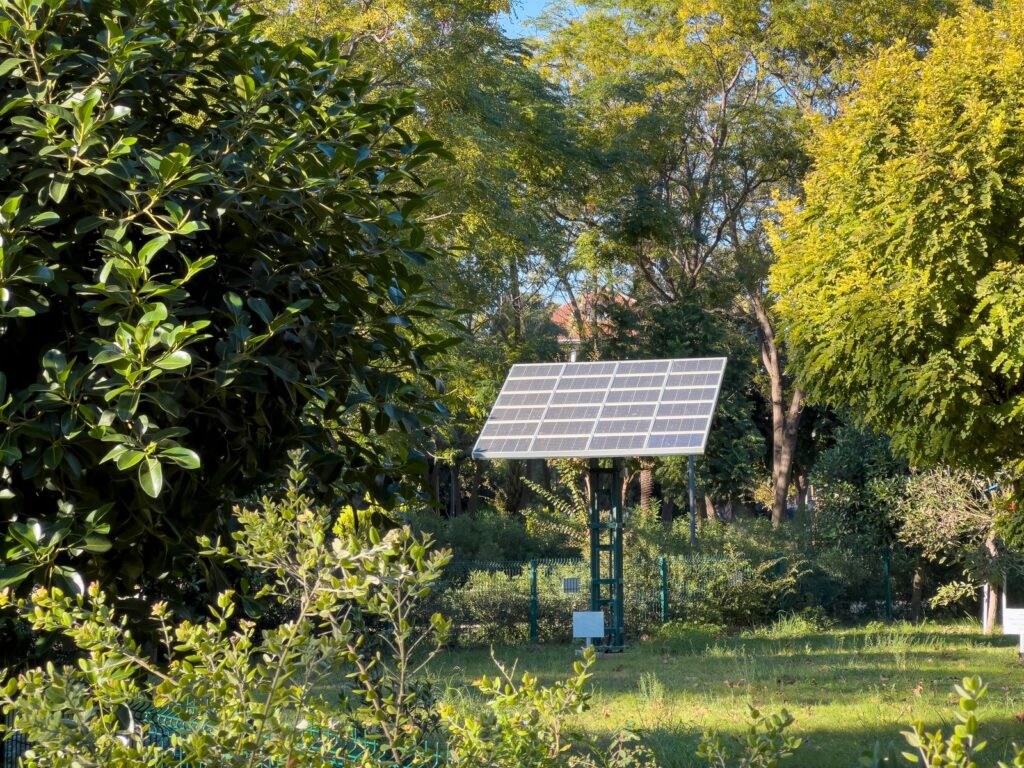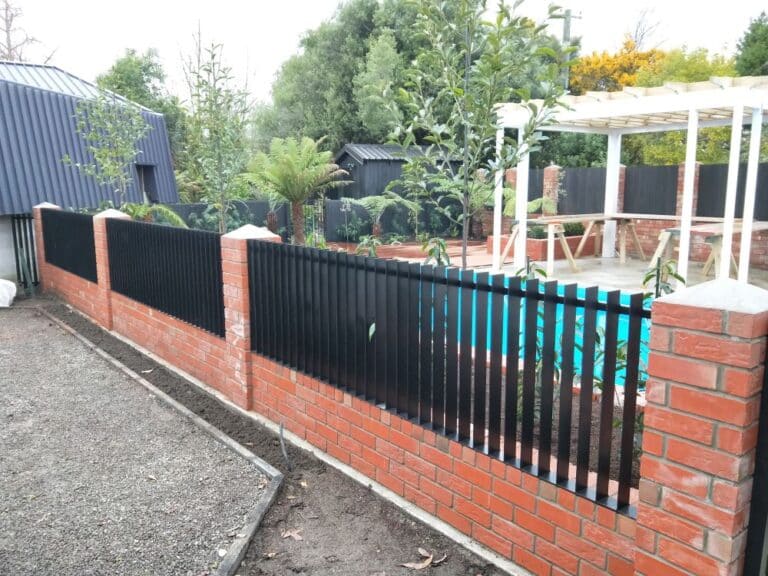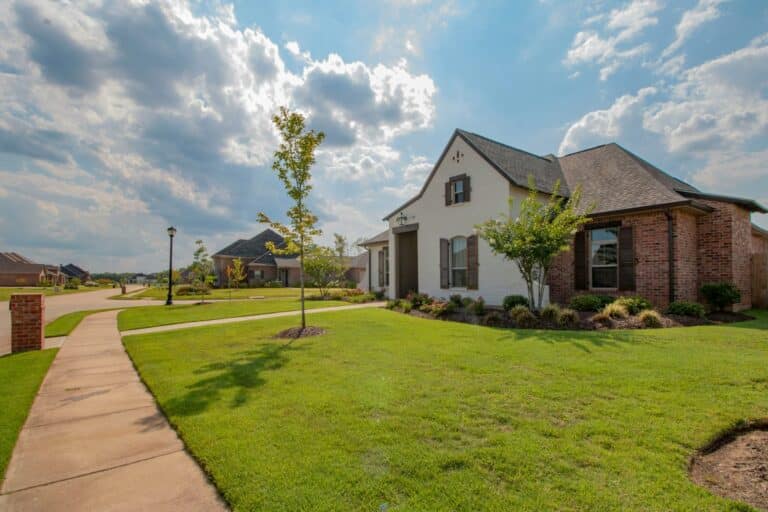As global awareness about the importance of sustainable living continues to grow, many individuals are seeking ways to reduce their carbon footprint and create a greener future with sustainable homes.
One of the most effective ways to achieve this is by making your home more environmentally friendly. In this guide, we will explore practical tips and strategies for minimising your carbon footprint and transforming your house into a green home.
Understanding the Concept of a Green Home
Before diving into the tips and strategies, it’s essential to understand what exactly a green home is. A green home, also known as an eco-friendly or sustainable home, is designed to have a minimal negative impact on the environment.
It incorporates energy-efficient technologies, sustainable materials, and environmentally friendly practices. By adopting green home principles, you can significantly reduce your carbon emissions and contribute to a healthier planet.
Benefits of Living in a Green Home
Living in a green home offers numerous benefits, both for the environment and for homeowners. Firstly, green homes are energy-efficient, which means they require less energy to heat or cool, resulting in lower utility bills.
Additionally, these homes often incorporate renewable energy sources such as solar panels, further reducing reliance on fossil fuels. Green homes also promote better indoor air quality by using non-toxic materials and proper ventilation systems, leading to healthier living conditions.
Finally, investing in a green home increases the overall value of the property and sets a positive example for others in the community.
Assessing Your Current Carbon Footprint
Before making any changes, it’s important to assess your current carbon footprint. This will help you identify areas where you can make the most significant impact. Start by analysing your energy consumption, water usage, waste generation, and transportation habits.
You can use online carbon footprint calculators to get a rough estimate of your emissions. Once you have a clear understanding of your current impact, you can begin implementing targeted strategies to reduce it.
Energy-Efficient Solutions for Your Home
Reducing energy consumption is a key aspect of creating a green home. Start by assessing your home’s insulation to prevent heat loss in winter and heat gain in summer. Adding weatherstripping to doors and windows and insulating your attic can make a significant difference.
Upgrade energy-efficient appliances such as refrigerators, washing machines, and heat pumps, which are designed to use less energy while maintaining their functionality. Consider installing smart thermostats that can automatically adjust temperature settings to save energy when you’re not at home. And consider roofing options that help save energy too.
Lastly, switch to LED light bulbs, as they consume less energy and have a longer lifespan compared to traditional incandescent bulbs.
Water Conservation Tips
Conserving water is another crucial aspect of creating a green home. Start by fixing any leaks in your plumbing system, as even a small drip can waste a significant amount of water over time. Install low-flow showerheads and faucets, which can save gallons of water per day.
Collect rainwater in barrels and use it for watering your plants and garden. Consider replacing your lawn with drought-resistant plants that require less water. Finally, be mindful of your daily water usage habits, such as turning off the tap while brushing your teeth or using a dishwasher only when it’s fully loaded.
Waste Management and Recycling Practices
Proper waste management and recycling are essential components of a green home. Start by setting up a recycling system in your home, ensuring that you separate recyclable materials from general waste.
Reduce your waste by composting organic waste, such as fruit and vegetable scraps. This will not only divert waste from the landfill but also provide nutrient-rich compost for your garden.
Avoid single-use plastics and opt for reusable alternatives, such as cloth shopping bags and stainless steel water bottles. Lastly, consider donating or repurposing items you no longer need rather than throwing them away.

Sustainable Transportation Options
Transportation is a significant contributor to carbon emissions. Minimising the use of private vehicles and opting for sustainable transportation options is crucial for reducing your carbon footprint.
Consider using public transportation whenever possible, as it reduces individual car emissions and eases traffic congestion. If feasible, walk or cycle for short distances instead of relying on a car.
Carpooling with friends, neighbours, or colleagues is another effective way to reduce emissions and save on fuel costs. Finally, if you’re in the market for a new car, consider purchasing an electric or hybrid vehicle, which produces fewer emissions and is more fuel-efficient.
Eco-Friendly Home Products and Materials
When making improvements to your home, choose eco-friendly products and materials to further minimise your carbon footprint. Opt for paints, adhesives, and cleaning products that are low in volatile organic compounds (VOCs), as these chemicals can have adverse effects on indoor air quality.
Look for furniture made from sustainably sourced materials such as bamboo or reclaimed wood. When purchasing appliances, check for energy-efficient labels such as Energy Star certification.
Swap out single-use plastic items for reusable alternatives, such as glass water bottles, stainless steel straws, and cloth grocery bags. By making conscious choices, you can significantly reduce your environmental impact.
Green Landscaping and Gardening Techniques
Creating sustainable homes extends beyond the four walls of your house. Your outdoor space also plays a significant role in reducing your carbon footprint. Embrace green landscaping and gardening techniques, such as incorporating native plants that require less water and maintenance.
Install a rain garden to capture and filter rainwater, reducing the strain on municipal water systems. Use organic fertilisers and natural pest control methods to maintain a healthy garden without harming the environment.
Additionally, consider starting a compost pile to recycle yard waste and kitchen scraps, enriching your soil naturally.

Incorporating Renewable Energy Sources
One of the most impactful ways to create a sustainable home is by incorporating renewable energy sources. Solar panels are a popular choice, as they convert sunlight into electricity and can power your home.
If feasible, consider installing a small wind turbine to harness wind energy. Both options not only reduce your reliance on fossil fuels but also provide long-term financial savings through reduced energy bills.
Before investing in renewable energy systems, consult with professionals to determine the feasibility and potential benefits for your specific location.
Green Home Certifications and Labels
When looking for a green home or planning to make green upgrades, it’s essential to look for reputable certifications and labels. The most recognised certification for green homes is LEED (Leadership in Energy and Environmental Design). LEED-certified homes meet strict criteria for sustainable design and construction.
Additionally, look for energy-efficient labels, such as ENERGY STAR, which guarantees that the product meets energy efficiency standards. By choosing certified green products and homes, you can ensure that you’re making a genuine positive impact on the environment.
Financial Incentives for Green Home Improvements
To encourage homeowners to adopt green practices, various financial incentives and programs are available. Research local and national government incentives for energy-efficient upgrades, such as tax credits or rebates for sustainable homes.
Additionally, check with your utility provider for any energy-saving programs or incentives they offer. Some programs offer free energy audits, which can help you identify areas for improvement.
Financial incentives not only make green home improvements more affordable but also provide a tangible reward for your commitment to sustainability.
Conclusion: Taking Steps Towards a Greener Future
Creating sustainable homes is not an overnight process but rather a journey towards a greener future. By implementing the practical tips and strategies outlined in this guide, you can significantly minimise your carbon footprint and contribute to a healthier planet.
Remember that every small step counts and your efforts inspire others to make sustainable choices. So, take action today and create a green home that will benefit both you and the environment for years to come.
Start your green home journey today and make a positive impact on the planet!




